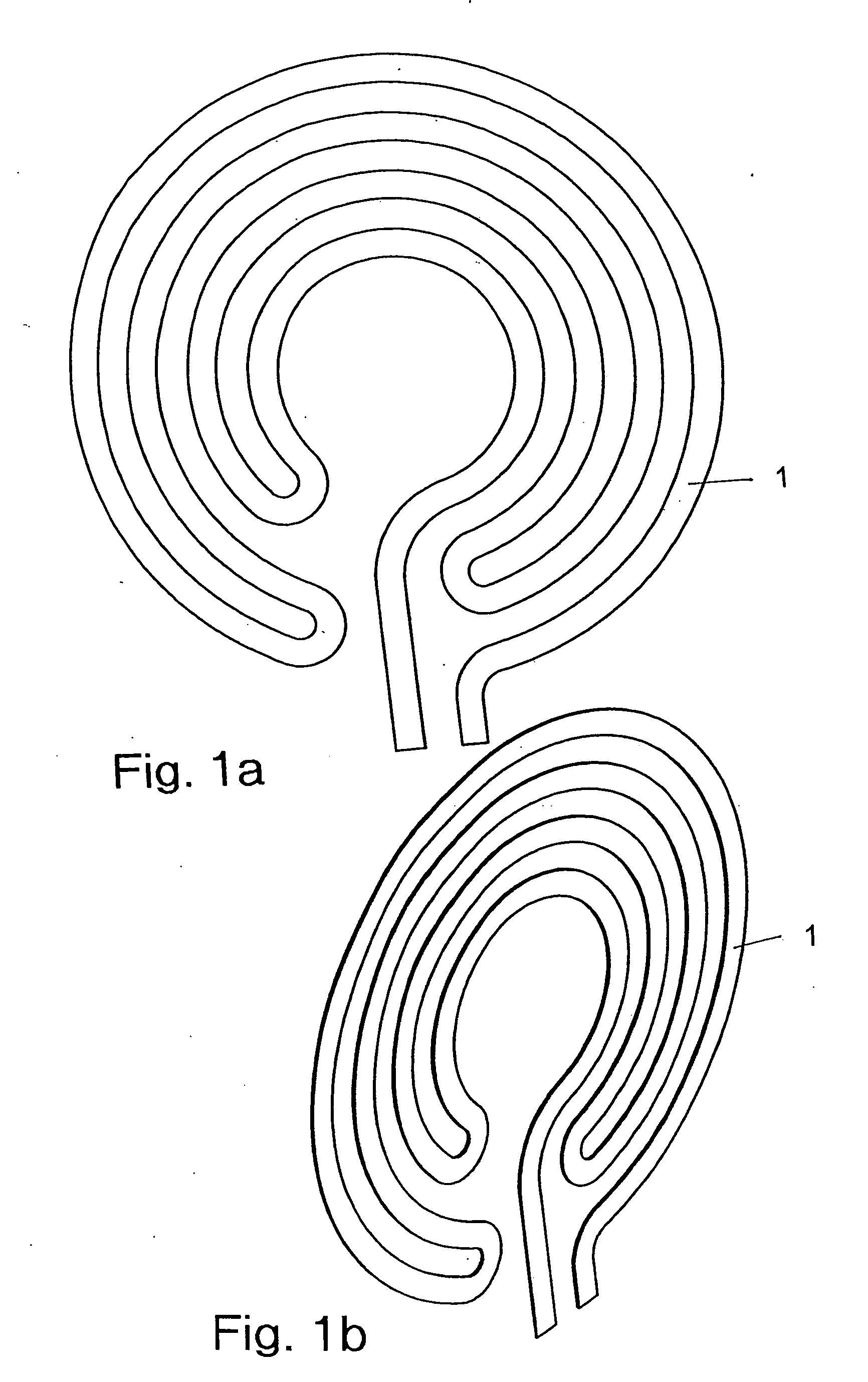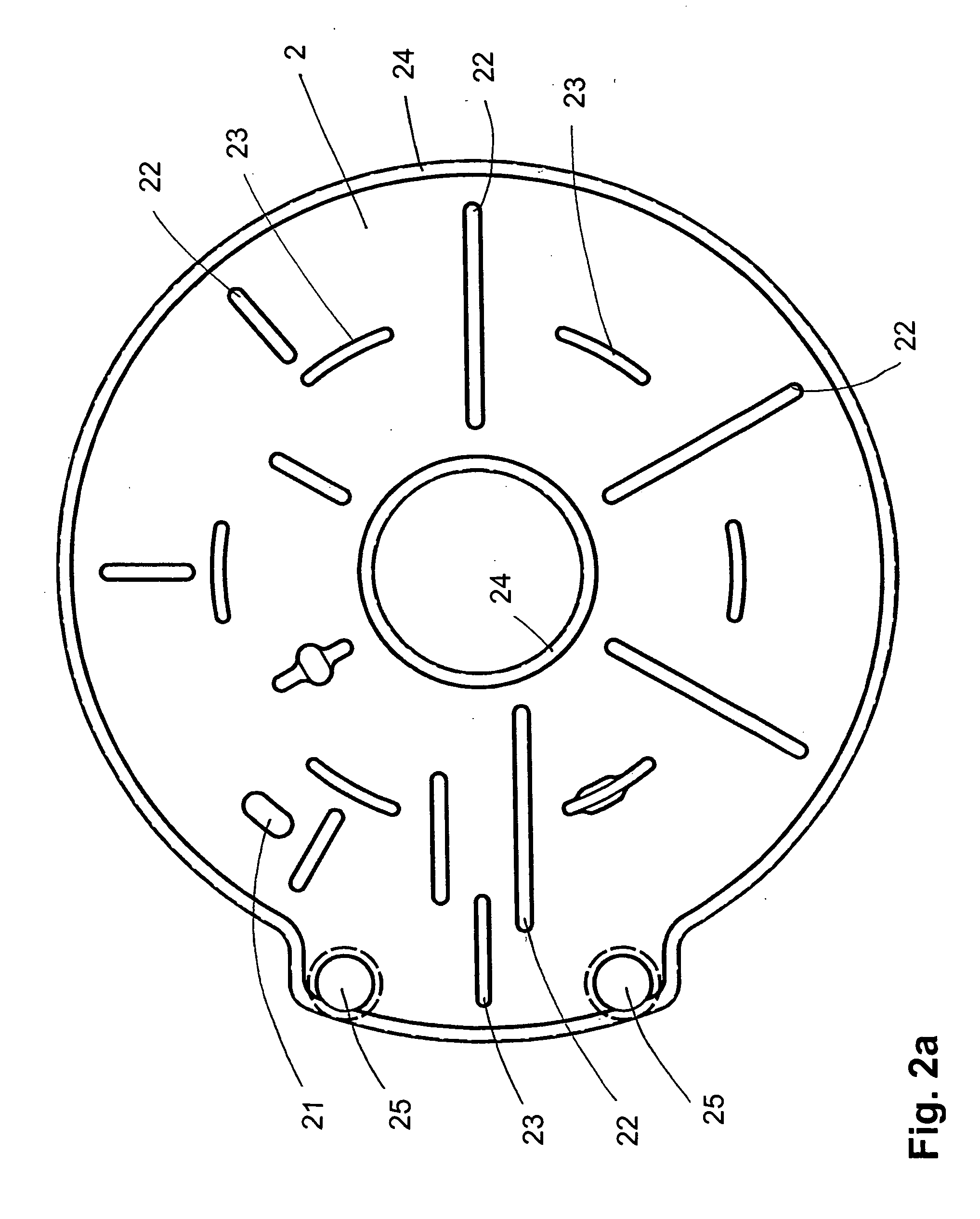CFC radiant heater
a radiant heater and heater technology, applied in the field of ir radiant heaters, can solve the problems of lack of two-dimensional character of radiating surface arrangement, carbon filaments disclosed in these documents cannot be assembled into arbitrary two-dimensional heating elements, carbon bands cannot be arranged in arbitrary two-dimensional patterns, etc., to achieve a large degree of flexibility in possible configurations, high output, and long service li
- Summary
- Abstract
- Description
- Claims
- Application Information
AI Technical Summary
Benefits of technology
Problems solved by technology
Method used
Image
Examples
production example
[0044] An opaque quartz glass plate 2 of sufficient thickness is cut into the necessary shape for the bottom side 2, then the recesses are milled and ground. In this way, the edge 24 and the spacers 23 remain at their original height and the contact pieces 22 for the filament stand at a lower height. Finally, the openings, in which the tubes for the electric contacting and the current leadthrough are placed, are bored. Edges are smoothed or fire-polished, if necessary.
[0045] Then tubes made of quartz glass are set on the bore holes, in each of which tubes a current leadthrough is arranged. Additionally, nozzles 27 for establishing a vacuum and for introducing flushing gas are located at these tubes.
[0046] The cover plate 3 for the top side is cut and ground from pure quartz glass. In particular, openings 31 for later welding of the plate to the spacers 23 of the opaque plate 2 are formed.
[0047] The heating element 1 is cut from a CFC sheet material by a water jet and then coated ...
PUM
 Login to View More
Login to View More Abstract
Description
Claims
Application Information
 Login to View More
Login to View More - R&D
- Intellectual Property
- Life Sciences
- Materials
- Tech Scout
- Unparalleled Data Quality
- Higher Quality Content
- 60% Fewer Hallucinations
Browse by: Latest US Patents, China's latest patents, Technical Efficacy Thesaurus, Application Domain, Technology Topic, Popular Technical Reports.
© 2025 PatSnap. All rights reserved.Legal|Privacy policy|Modern Slavery Act Transparency Statement|Sitemap|About US| Contact US: help@patsnap.com



